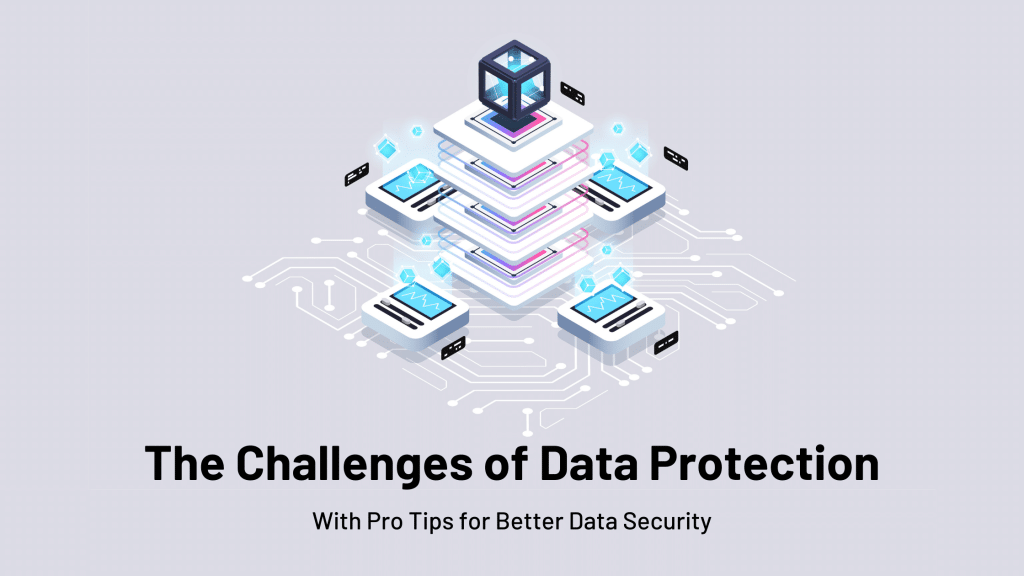
Today, along with monetary transactions, every business also conducts data transactions. These are in terms of acquiring customers, chasing leads, solutioning, invoicing, and customer support queries. Data is collected and disbursed at almost every process of the business servicing process, no matter what kind of company you run. All in all, data has become almost as lucrative a target for hackers as money. This also amplifies the challenges of data protection for every business with an online presence (just another way of saying EVERY business in the world).
Why? Because the repercussions of a data breach have reverberating after-effects. A lapse in data protection standards today cannot be kept under the wraps. News spreads and you lose all your hard-earned reputation and customer trust.
Oh, one more thing. Remember the pesky cookies bar that pops up on every website? When you ‘accept’ cookies, the company is expected to handle your data securely because it is in the GDPR disclaimer that comes along with the cookie bar. Failing to comply with the GDPR standards incurs a hefty fine from the regulatory board.
Not to mention the plummeting stock prices (if you’re publicly listed) because of all the bad publicity… all in all, it turns out to be an expensive affair. Which is why understanding and conquering the challenges of data protection is paramount.
What are the types of sensitive data?
An organization, once it starts conducting its business online, starts amassing 3 broad categories of sensitive data.
One type of sensitive data is the information related to day-to-day operations. This includes email trails, team chats, virtual meeting recordings, reports and analyses, sync ups on projects that need strict Intellectual Property monitoring etc. In the wrong hands, this sensitive data can work against you to steal your competitive advantage.
Another kind of sensitive data that presents the threat is the data related to your employees. More specifically, their Personally Identifiable Information (PIIs), their salary and taxation details, and employment history.
Similarly, you also collect sensitive data from your customers, like their contact details, bank account details, billing and shipping addresses, their purchase history and preferences etc.
As a business owner, it is your responsibility to handle all this sensitive data and keep it from getting breached.
The 4 Major Challenges of Data Protection
Avenues for data protection
The first challenge of data protection is understanding exactly where sensitive data is present. Employees have unorganized file structures. They may Cc their personal email accounts while sending mails from their business accounts.
Or you may be storing data on the cloud at the mercy of their inherent security mechanisms.
Considering all the hundreds of avenues where proper data protection protocols are skirted, it is very difficult to know exactly where sensitive data lies. And if you don’t know where it is, you cannot protect it.
Tip to solve this challenge: use the data discovery process. By automating data discovery, all the nasty surprises will be exposed and you will understand exactly where your sensitive data is most vulnerable.
Classifying sensitive data
Sensitive data as a blanket concept doesn’t shed much light on the nature of the data to be protected. Once the data is located through data discovery, you must assign a value to it as a starting point for governance.
Sensitive data classification involves determining the data’s sensitivity and business impact so you can assess the true risks of a breach. This simplifies managing sensitive data. You also understand the data points you MUST protect from theft or loss.
Tip to solve this challenge: Leveraging security products that enable auto-labelling of sensitive data across an enterprise allows you to classify data at scale.
Protecting sensitive data
Breaches are one of the most constant looming challenges of data protection. The onus of preventing data breaches falls on the Chief Information Security Officer (CISO) and Chief Data Officer. They are responsible for protecting sensitive data and regulating data sharing through the right channels and privileges.
Tip to solve this challenge: we recommend an approach that integrates data protection into your existing processes to protect sensitive data. When considering plan protections, ask: Who can access the data? Where should the data live and where shouldn’t it live? How can the data be used?
Managing Data Governance
Data governance is the collective set of principles that ensure data that’s used in your business, reports, and analysis is discoverable, accurate, trusted, and well protected.
An important factor of data governance is that you keep data for the right amount of time. Don’t store data any longer than necessary because that increases your exposure to risk. At the same time, don’t jump the gun and delete data too quickly because regulatory laws require you to manage a historic data trail. All this also includes the data collected from the customers, which increase the sensitivity of the data.
Tip to solve this challenge: To abide by the data minimization principle, once the data is no longer serving its purpose, it must be deleted.
Acquiring the Security to Handle the Challenges of Data Protection
Microsoft solutions offer audit capability where data can be watched and monitored but doesn’t have to be blocked. It can be overridden too so it doesn’t get in the way of the business. Also, consider standing access (identity governance) versus protecting files. Data leakage protection tools can protect sensitive documents, which is important because laws and regulations make companies accountable.
Microsoft uses the following data classifications:
- Non-business: Data from your personal life that doesn’t belong to Microsoft.
- Public: Business data freely available and approved for public consumption.
- General: Business data not meant for a public audience.
- Confidential: Business data that can cause harm to Microsoft if overshared.
- Highly confidential: Business data that would cause extensive harm to Microsoft if overshared.
Using its inherent data handling principles, Microsoft offers advanced data security and surpasses all the challenges of data protection.
